Hangry is not normal hunger. Normal hunger is usually brought about by smelling food. It’s…
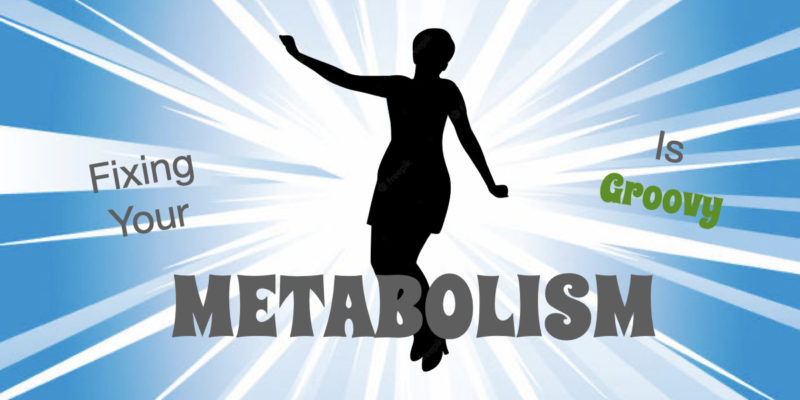
Insulin Resistance And Metabolic Health Testing Using HOMA-IR
Table of Contents
- Insulin Resistance Saps Energy and Stalls Weight Loss
- What is Insulin Resistance?
- Insulin Resistance Makes You Metabolically Inflexible.
- Healing Insulin Resistance Makes You An Energy Bunny
- How is metabolic flexibility connected to insulin resistance?
- The Problem With Rapid Weight Loss
- Assessing Your Readiness for Weight Loss
- Metabolic Inflexibility Makes You Mentally Fragile
- Understanding the HOMA-IR Test
- How to Get a HOMA-IR Test
Insulin Resistance Saps Energy and Stalls Weight Loss
If you struggle to lose weight you may feel like your metabolism is “slowing down,” and many attribute this slowdown to the effects of aging–a problem that can’t easily be solved. If you have suspected your metabolism is stalling weight loss, my experience has taught me that what’s really going on is your metabolism is becoming inflexible. It’s becoming less able to generate energy from fat and more dependent on sugar.
That’s actually good news because, unlike your age, you can change this. You can fix a broken metabolism. But you have to understand what’s broken if you want to fix it. That’s where insulin resistance testing using the HOMA-IR score comes in.
This article is for people who feel like weight loss is harder than it used to be. If you are someone who has noticed that you can’t lose weight as easily as you used to, let me reassure you that’s not due to a lack of willpower. It’s due to a decline in metabolic health that is entirely reversible. I will show you why getting your HOMA-IR score before trying yet again to lose weight will help to set you up for success.
This article is continued below...(scroll down)
First let’s talk about the IR in the HOMA-IR score, which stands for Insulin Resistance.
What is Insulin Resistance?
When your body can’t respond normally to the hormone insulin, we call this condition insulin resistance.
Insulin helps to regulate your blood sugar by pushing it into your body’s cells. Insulin can push some sugar into your muscles, but most of the sugar goes into fat cells and builds body fat.
Insulin resistance is a precursor to prediabetes, which is a precursor to full-blown type 2 diabetes. Conventional thinking in medical science overlooks what I and many other researchers feel is an important link between seed oils and insulin resistance. I discuss this connection briefly here and in detail in this book.
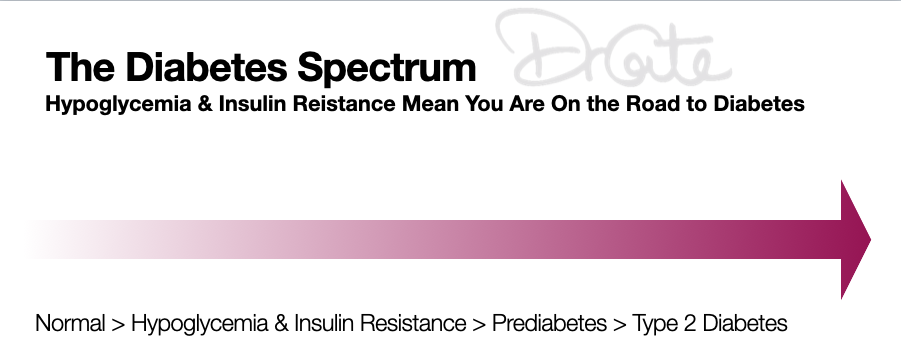
If insulin makes you build body fat, you might think insulin resistance would prevent you from building body fat. Wouldn’t that be great? But that’s not what insulin resistance actually does.
Insulin resistance simply means that your body has lost the normal responsiveness to insulin. One consequence of this is that it forces your pancreas to produce much more insulin than normal to get your fat cells to be willing to take sugar out of your bloodstream. Another consequence of being insulin resistant is that your insulin levels are higher all the time. When your insulin levels are high, your body is more likely to build fat than to burn fat. This makes weight loss difficult.
Insulin Resistance Makes You Metabolically Inflexible.
Insulin resistance links aging to weight gain. As you get older and develop insulin resistance, this blocks your ability to burn body fat. When you can’t easily burn your body fat, you are metabolically inflexible. That’s why I say your metabolism isn’t slowing down, it’s breaking down.
What you want is metabolic flexibility. We are born metabolically flexible, but on our high-seed oil diet, we gradually lose this healthy metabolic characteristic.
Metabolic flexibility allows your body to burn off body fat between meals easily—without you getting hungry or tired. You need to easily burn your body fat if you are going to easily lose weight. You also need to easily burn body fat to prevent the weight you lose from coming right back.
Fortunately, you can take the same steps to reverse insulin resistance and regain metabolic flexibility.
For a few more research papers that show seed oils promote insulin resistance, visit this page.
Healing Insulin Resistance Makes You An Energy Bunny
Metabolism is all about energy. That’s the role of your metabolism: to give your cells energy. That energy is supposed to come mostly from your body fat. But when you are insulin resistant, it can’t come from your body fat the way nature intended. When you can’t get energy from your body fat, you rely on sugar. And that abnormal reliance on sugar causes you to give in to cravings. That’s why insulin resistance makes you gain weight.
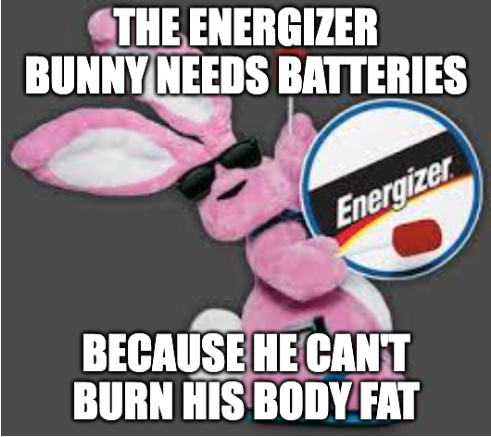
Many people talk about losing weight as a way to heal insulin resistance but that’s backward. You have to heal your insulin resistance so that you can lose weight and keep it off.
How is metabolic flexibility connected to insulin resistance?
You can think of metabolic flexibility and insulin sensitivity as the same thing. You can also think of metabolic inflexibility and insulin resistance as the same thing. Insulin resistance and metabolic inflexibility both make it harder for your to burn your body fat.
How does that work?
Insulin resistance means your body has to produce higher insulin levels to control your blood sugar. Most people with insulin resistance have more insulin in their bloodstream all the time. This is true even when you avoid sugar and go on a low-carb diet. Cutting carbs does lower your blood sugar, but it does not cure insulin resistance.
More insulin in your blood more of the time means your body spends much more time building body fat than burning it. This is one reason why insulin resistance makes you gain weight more easily.
The Problem With Rapid Weight Loss
The weight loss industry has let people down. The whole point of losing weight is losing unwanted body fat, right? You don’t want to lose your muscle, bone mass, organ volume, or hair. But guess what, when you are insulin resistant, that’s exactly what you do when you go on diet that restricts calories to about 1000 or less to get that fast weight loss so many people want.
Rapid weight loss usually refers to losing a kilogram (2.2 pounds) per week over a sustained period of several weeks. This is what most high-intensity exercise and shake, bar, and supplement diet programs have you doing. These rapid weight loss plans are very common, but they’re not healthy for many reasons.
It’s a dirty secret of the rapid weight loss industry, but the truth is that anywhere from 20 to 30 percent of the weight you lose can come from your lean tissues and even your vital organs. (For references, see below).
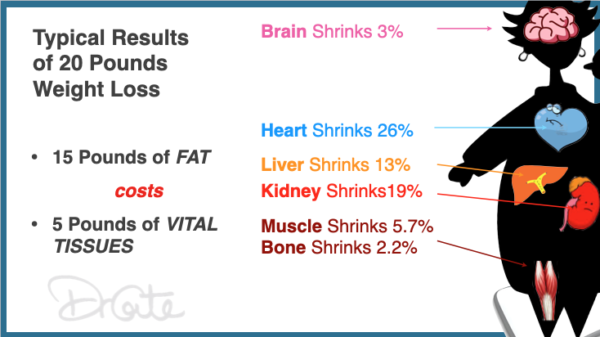
Obviously, this is not what we want. Yet for years, people promising rapid weight loss without assessing metabolic inflexibility have been forcing people’s metabolism to go after those other tissues and break them down to burn for cellular fuel. This is not acceptable, and it’s the reason I wanted to write a book that would prevent anyone from doing this to their body.
Assessing Your Readiness for Weight Loss
Wait, what? How can someone not be ready to lose weight?
Well, for one thing, you’ve just seen in the previous section that calorie restriction while you’re still metabolically inflexible can shrink your lean tissues. And there’s another side to metabolic health that few people talk about, it’s the connection to mental health.
Assessing your ability to burn your body fat is, in my view, step one for anyone who wants to lose weight. It’s especially important if you intend to try a keto diet, intermittent fasting, or time-restricted eating. The HOMA-IR test is one of the best ways to find out about your metabolic flexibility.
The FatBurn Quiz Also Assesses Your Readiness for Weight Loss
In the FATBURN FIX book, I use the term FATBURN to describe your ability to burn your body fat for fuel between meals. I like it better than metabolic flexibility because it’s a more intuitive term that doesn’t need quite so much explanation.
I also wanted to give people an easy way to test their readiness to lose weight without any needles or blood testing So I created a FATBURN Quiz. The book walks you through the FATBURN quiz and gives you a score between 0 and 100 that helps you understand your metabolic flexibility. Then, depending on how you did on the test, it matches you up with the best kind of meal plan to set you up for long-term success.
Metabolic Inflexibility Makes You Mentally Fragile
Another consequence of trying to lose weight with a broken metabolism relates to brain energy. It’s now becoming more and more apparent that low brain energy can seriously harm your mental health.
Weight loss attempts when you cannot easily burn body fat can rapidly deprive your brain of the energy it needs to keep you functioning at your peak. This is because the inability to burn your body fat depletes your body of sugar. Combine an abnormal reliance on sugar with insulin resistance and you are likely to experience blood sugar fluctuations both up and down.
You don’t feel high blood sugar unless you’re already a type 2 diabetic and your sugars go really high. But you do feel symptoms from rapidly falling blood sugar and from low blood sugar. This is why so many people today now suffer from a condition called hypoglycemia. Hypoglycemia stresses your brain cells the most because they rely on sugar more than other cells in your body.
When your brain cells don’t get energy, you can feel hangry, irritable, anxious—and worse. Fixing your metabolism not only helps you lose weight and keep it off, but it can also help your mental health, job performance, and overall resilience.
Understanding the HOMA-IR Test
The HOMA-IR test tells you how insulin-resistant or sensitive you are. A score of 1 or less is generally considered ideal, while a score over 2.9 suggests definite insulin resistance. People with type 2 diabetes can have scores over 100.
When I work with folks who have a score over 1.0 I need to assess their ability to burn their body fat to help choose the best weight loss strategy. And I do that with questions similar to those on the FATBURN Fix quiz. If you take the quiz and your score is 74 or lower, it means you’re not quite ready for intermittent fasting, for example, and it’s very important to build meals that sustain your energy and help ease you into fat burning. The part of the book that helps you to do that is called The Baby Steps Phase.
How to Get a HOMA-IR Test
The HOMA-IR is a blood test that you can get without a doctor’s order in most states through several vendors. Here’s a link to one vendor that I’ve been working with for decades. (If you use that link to get a test from my website I will get a referral fee.)
Once you get the results, you can plug the numbers into this calculator to find your score.
You can work with me to understand what your number means in more detail. Or you can get the FATBURN Fix book that will help you assess your metabolic flexibility with a clinically validated questionnaire that I created for my own patients.
Watch this interview where I discuss how I developed the current practices that I use to fix your metabolism
References:
For organ loss: “Contribution of individual organ mass loss to weight loss–associated decline in resting energy expenditure” and “Changes in skeletal muscle and organ size after a weight-loss intervention in overweight and obese type 2 diabetic patients“
This Post Has 3 Comments
Note: Please do not share personal information with a medical question in our comment section. Comments containing this content will be deleted due to HIPAA regulations.


















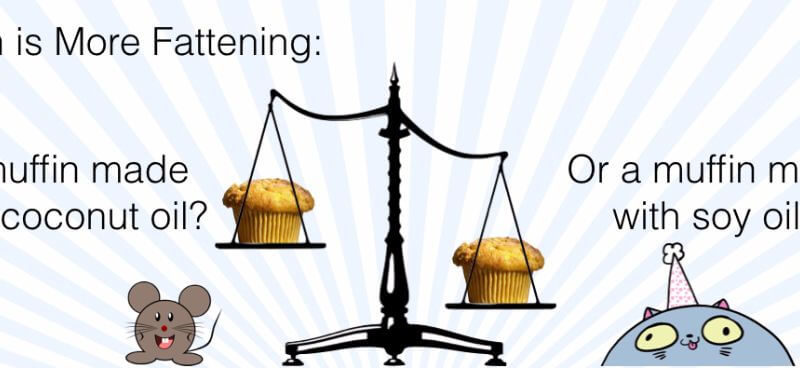
Can organ weight be regained?
Hi,
There is no hyperlink in this text on this web page, so there is no way to access the calculator.
“Once you get the results, you can plug the numbers into this calculator to find your score.”
I wonder if it could by fixed, or if there is another page to access the HOMA-IR calculator.
Thank you!
Catherine
Link fixed